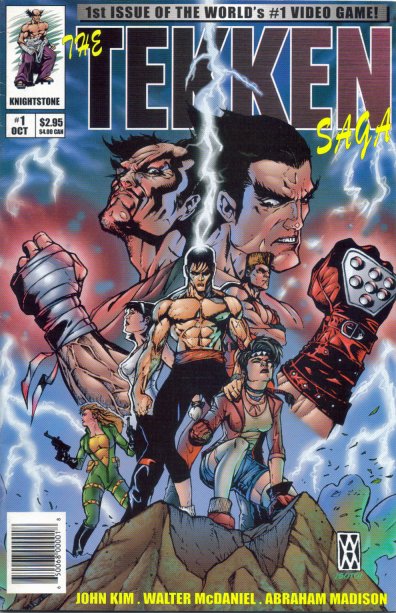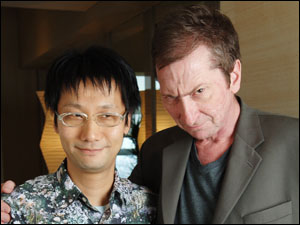
Tekken Saga and Tekken 2: Mishima Family Values
June 15th, 2009 Posted by GavokAs much as I love fighting games and their storylines, just about all of them run into one major problem: if the series goes on long enough, the writers will run out of ideas and just pull off the same story over and over again with slight variation. King of Fighters reached this point after their ’97 incarnation. Mortal Kombat got there in its third game, though they were original enough in their ideas that it didn’t get too stagnant until several games later. Street Fighter went on for a while without this, up until Street Fighter 4. Soul Calibur is probably the worst offender, as despite five games, they’ve yet to come up with a story other than “guys fight each other in search of sword that just won’t die.”
Tekken, which is by the same company as Soul Calibur, is also a pretty bad offender. On one hand, the later the game, the more personality we get out of the characters. On the other hand, almost all the characters are window dressing to the never-ending infighting between the Mishima family members, who are all a bunch of assholes.
See, you have Heihachi Mishima, who is an asshole. He’s opposed by his son Kazuya Mishima, who we discover at the end of the first game to also be an asshole. Then in the third game, we get Kazuya’s son Jin Kazama, who seems like an all right guy for a while, only to succumb to being an asshole by the end of Tekken 5. Tekken 5 also introduces Heihachi’s powerful father Jinpachi Mishima, who is a pretty sweet guy, only he’s possessed by a power that’s forcing him to be an asshole.
Insert your Spaceballs joke right here.
Let’s go back to the simpler days, when the rivalry was no more than Kazuya vs. Heihachi. Tekken 3 was just being released, leading to the most popular era for the Tekken franchise. To tie in with this, the comic company Knightstone put together an attempt to retell the story of the first few games with Tekken Saga.

What’s with Kazuya? It’s like he’s spooked by Law’s ability to completely ignore getting hit in the skull with lightning. Or maybe he’s weirded out by Paul Phoenix’s hair.
Tekken Saga #1 came out in October, 1997. John Kim was the writer with Walter McDaniel an art. It begins years before Tekken 1, where Heihachi holds a meeting with his top underlings at the Mishima Zaibatsu (which in the comic is spelled “Zabitsu”). Conveniently, all three of his businessman flunkies turn out to be fathers of Tekken series mainstays: E. David Gordo, Bernard Chang and James King.



